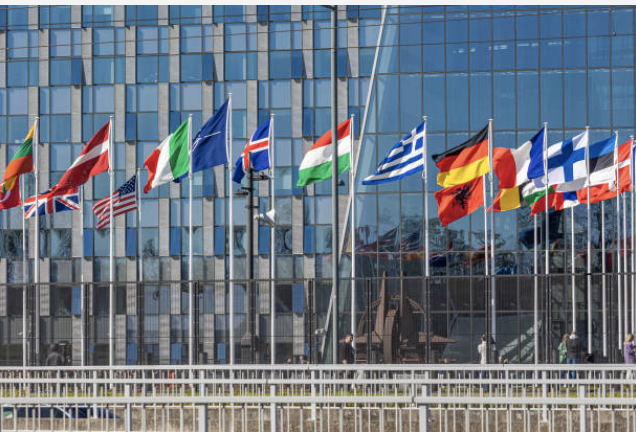Calvin Beisner: How the War on Nitrous Oxide Threatens Global Food Supply

An extremely dangerous trend in public policy is growing around the world: demanding reduced emissions, mainly from agriculture, of nitrous oxide (N2O) because it contributes to global warming. Indeed, we’re told, every molecule of nitrous oxide in the atmosphere has 230 times the warming potential of every molecule of carbon dioxide-and governments all over the world concluded long ago, rightly or wrongly, that we must cut carbon dioxide emissions to reduce global warming. Clearly, then, it is even more important that we cut nitrous oxide emissions.
What’s dangerous about this? Nitrous oxide is a critical input of agricultural production. Reducing its use will seriously reduce food production, harming the world’s poor. But, if global warming is even more dangerous than reduced food production (which it is not, but for the moment we’ll assume it is for the sake of argument), surely, we must go ahead and take this step. Life is full of tradeoffs, after all.
Not so fast. Things aren’t quite that simple.
I want to begin with a thought experiment. Imagine that you have two cans of paint, A and B. Like all paint, their content is a mixture of clear liquid, through which light passes unimpeded, plus some color pigment. The concentration of the pigment determines how intense the color is, that is, how much light it absorbs so it doesn’t pass through the clear liquid. In can A, 230 out of every 1,000 molecules of paint are pigment. In can B, 1 out of every 1,000 molecules is pigment. It follows obviously that a coating of paint from can A will absorb 230 times as much light as a coating of the same thickness of paint from can B.
Now imagine that you apply 10 coats of paint from can A to a sheet of clear glass, and 23 coats of paint from can B to another sheet of clear glass. Which will block more sunlight? The sheet with paint from can A, because 230 times 10 is more than 23 times 1. Now imagine that instead you apply 10 coats of paint from can A to a sheet of glass, and 30,000 coats of paint from can B to another sheet. Now which will block more sunlight? Obviously, the sheet with paint from can B, because 30,000 times 1-30,000-is 13 times more than 230 times 10-2,300.
This is a simplified analogy-not perfect, but good enough to give us the basic idea-to the comparison between the radiative forcing (which determines the warming effect) of carbon dioxide emissions and that of nitrous oxide emissions.
Those who demand that we cut nitrous oxide emissions will point out that the radiative forcing by every molecule of nitrous oxide is 230 times that of every molecule of carbon dioxide. If we think we must cut carbon dioxide emissions to curb global warming, they reason, it follows that it’s even more important to cut emissions of nitrous oxide.
But they neglect two important things. First, concentration nitrous oxide’s concentration in the atmosphere is about 0.334 parts per million in the atmosphere, while carbon dioxide’s is about nearly 1,300 times as high: 420 parts per million. Second, and more important, carbon dioxide’s concentration is increasing at a rate some 3,000 times that of nitrous oxide. Consequently, the contribution of each year’s addition of nitrous oxide to the annual increase in forcing is 230 divided by 3000, or about one-thirteenth that of carbon dioxide. Similar comparisons can be made between the radiative forcing of nitrous oxide and that of methane.
To cut to the chase, it can be calculated, based on the well-understood physics of radiative transfer, that the combined radiative forcing of carbon dioxide, methane, and nitrous oxide that are being added to the atmosphere is enough to raise global average atmospheric temperature by about 0.1 degree Celsius (0.18 degree Fahrenheit) per decade, or 1.0 degree Celsius (1.8 degrees Fahrenheit) per century. But since the rate of increase of nitrous oxide’s concentration in the atmosphere is much, much lower than that of either carbon dioxide or methane, it turns out that the radiative forcing of nitrous oxide being added to the atmosphere is only about 0.01 degree Fahrenheit per decade, or 0.1 degree per century-one eighteenth of the combined warming from all three gases.
What those who demand that we cut nitrous oxide emissions by reducing or even eliminating our use of nitrogen-based fertilizers in agriculture-the primary source of nitrous oxide emissions-want us to do, then, is to drastically curb food production, at very high cost, in order to slow global warming by only about a tenth of a degree Fahrenheit per century. Does that make sense?
I don’t think so.
Nitrous oxide is crucial to agricultural production. When Sri Lanka, a year ago, ordered all its farmers to stop using nitrous fertilizers, the impact on agricultural yields was devastating, leading to a complete collapse of its government. A less stringent but still destructive policy in the Netherlands led to widespread protests by that country’s farmers-whose amazing productivity has made that tiny country the world’s second-largest exporter of agricultural products. Declined production there will multiply hunger and starvation in developing countries that import food from the Dutch.
Tell your elected representatives, in the White House and in Congress, what you think.
Want to learn more about this? My good friends at the CO2 Coalition have just published a major technical paper on the subject along with a short summary for non-scientist readers.
E. Calvin Beisner, Ph.D., is President of The Cornwall Alliance for the Stewardship of Creation and author of Where Garden Meets Wilderness: Evangelical Entry into the Environmental Debate.
" Conservative News Daily does not always share or support the views and opinions expressed here; they are just those of the writer."





